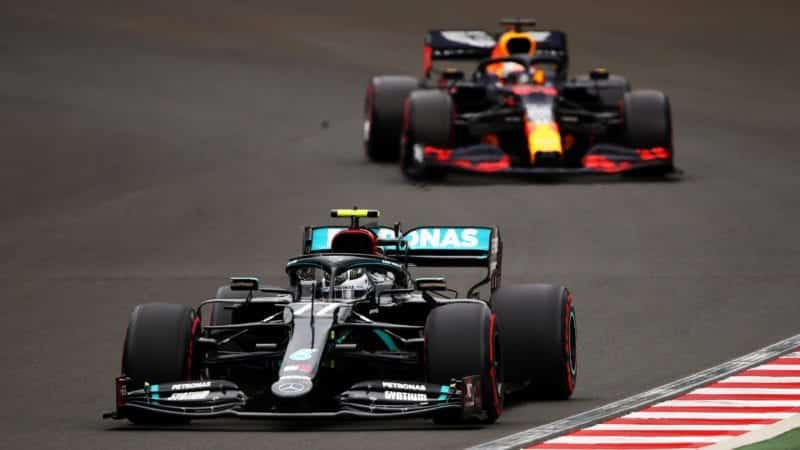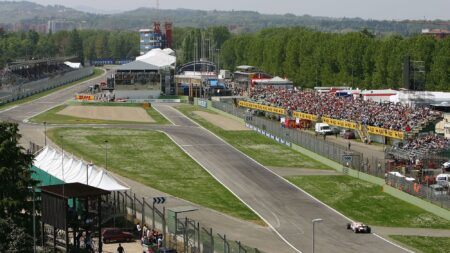A comment from Albon over the radio was also quite illuminating. “I don’t understand how I can have massive understeer through Three and then I arrive at Four and have oversteer.”
An aerodynamicist I was talking with didn’t sound too surprised.
“Since the regs changes of 2019 [principally the simplified endplates and the restriction of the under-nose vanes], the vortices you’re creating at the front end of the car can be quite unstable. Especially if you are running a lot of rake. The car is articulating around the front bib of the floor and that rake is increasing quite quickly as you slow down – and that makes that whole flow quite volatile. You can see in the tunnel the vortices can even suddenly switch from inboard to outboard. It could be the amount of steering lock or a crosswind – it’s so on the edge.”
Which would seem to be a pretty good fit with the problems the Red Bull drivers are experiencing. Last year’s Red Bull didn’t have the slow corner alacrity of the Mercedes and one of the key targets for the RB16 was to endow it with a more aggressive slow corner response. Hence the totally new front end design and packaging. But in chasing that, it seems to have created a car which – in Austria and Hungary, at least – cannot be leant upon with any confidence of what it’s going to do and how recoverable any moment might be.
It seems, in other words, as if the high-rake concept might just be plain wrong for the regulations as conceived since last year. And in stretching that concept in the chase of the low-rake Merc’s performance, it’s finally bust. If that’s true, and with most of the field chasing high-rake, a well-conceived low-rake car could probably come in and be very competitive straight away. A car like the Racing Point, for example.



